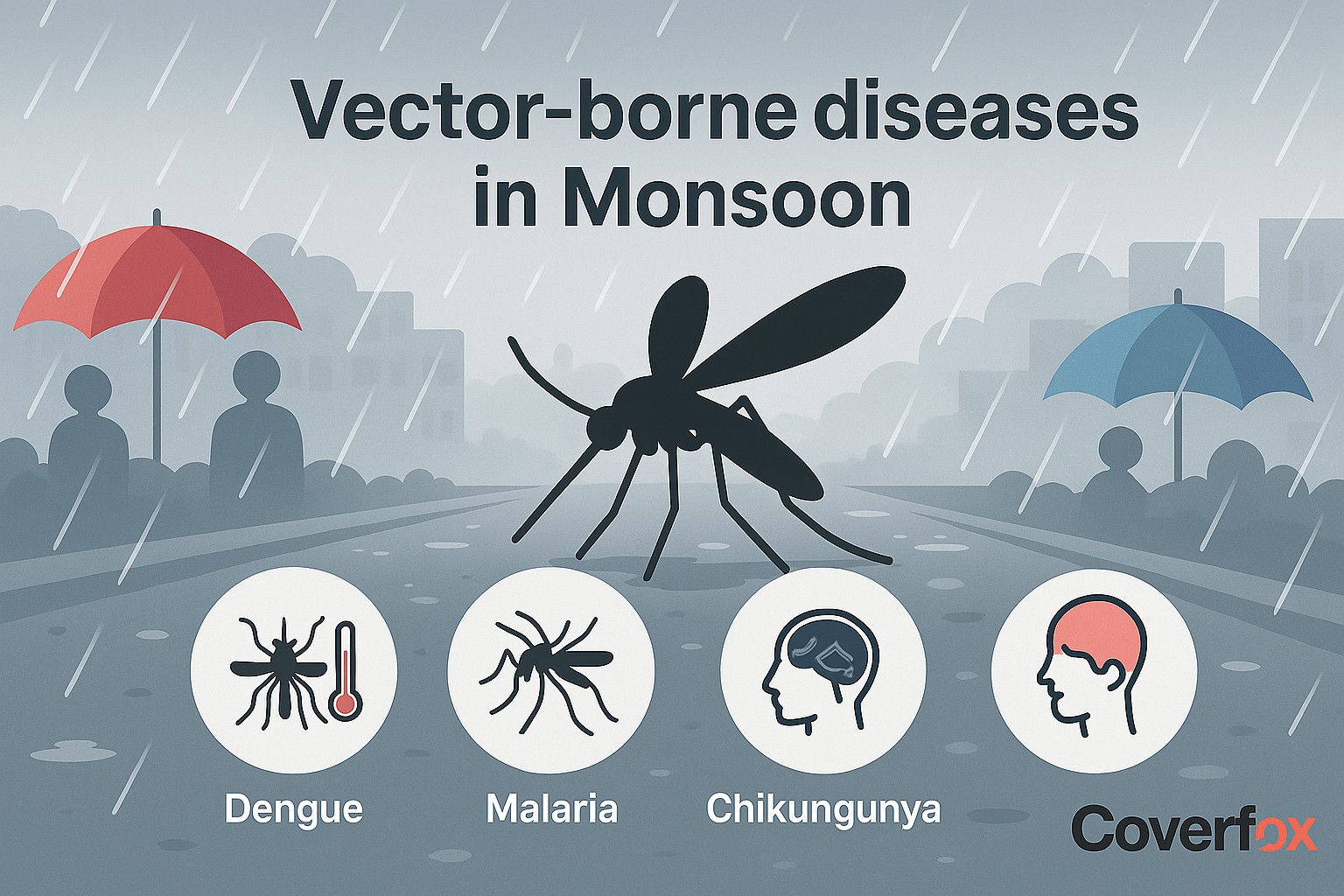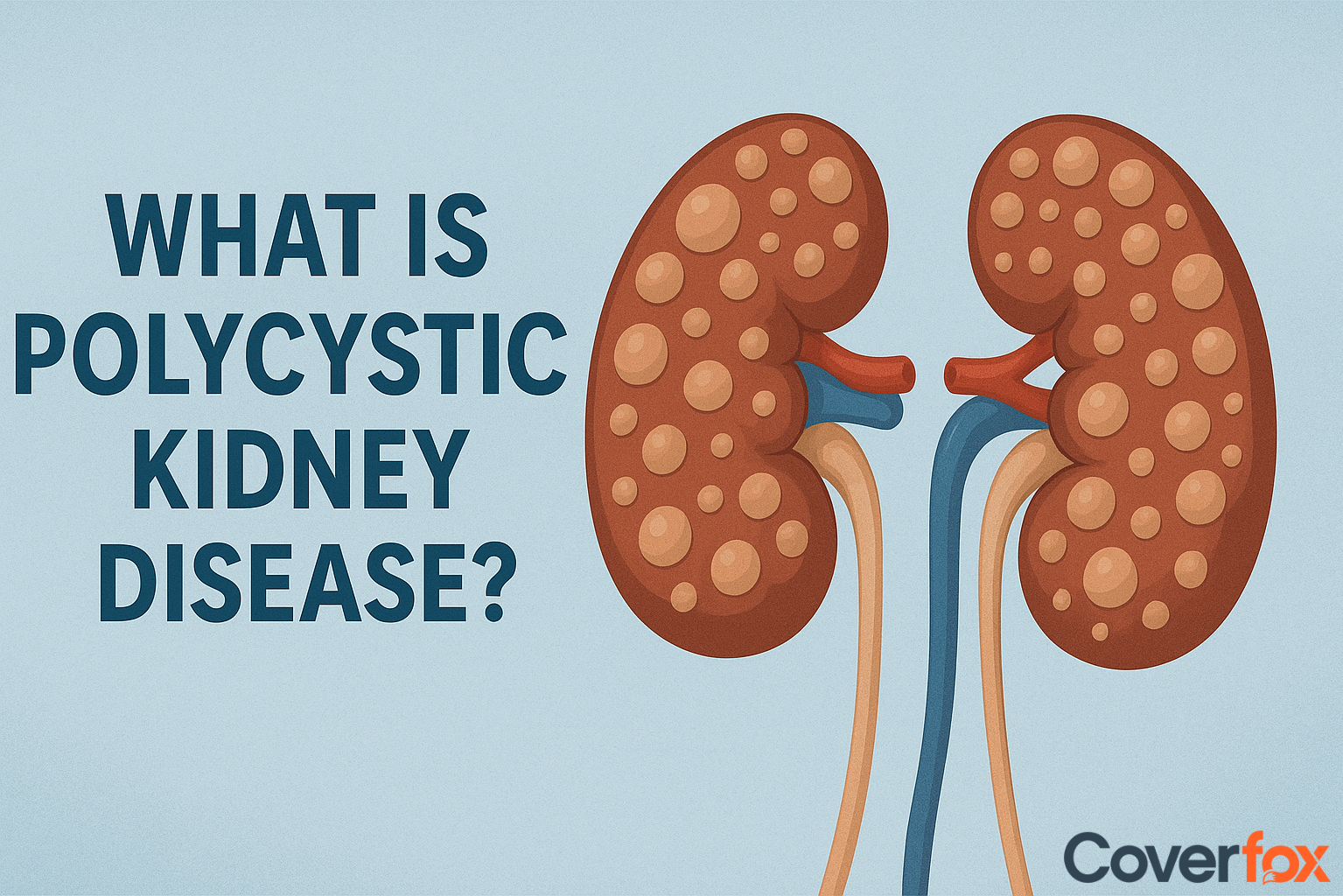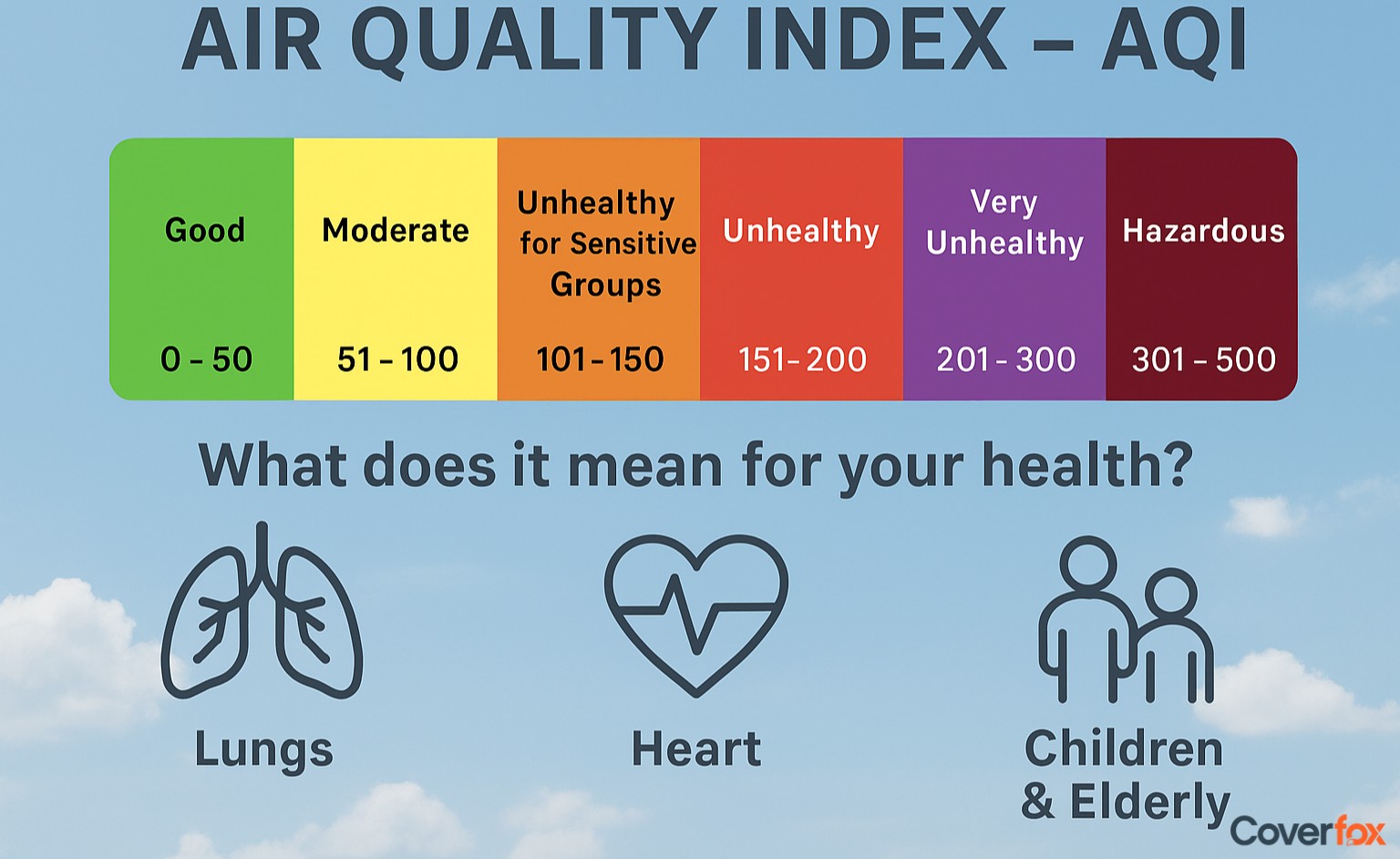Monsoon - The infamous season for mosquitoes, and a major health threat because of the vector-borne diseases that come along with it. So, what are vector-borne diseases?

Vector-borne diseases are diseases that are spread to humans or animals through a pathogen, generally through the bite of mosquitoes, fleas or ticks. Why does the monsoon season see a rise in vector-borne diseases, and what are their causes? This article will answer all those questions.
Causes of Vector Borne Diseases in Monsoon
Vector-borne diseases are primarily transmitted by mosquitoes and other insects whose populations surge during the monsoon. Understanding the root causes can help in the effective prevention and control of these possibly fatal diseases.
Stagnant Water
High Humidity
Increased Human-Vector Contact
Disrupted Ecosystems
Water accumulation from heavy rains in open containers, potholes, gutters, and construction sites becomes the perfect breeding ground for mosquitoes, especially the Aedes and Anopheles species – the kind that causes dengue and malaria.
Increased atmospheric moisture prolongs the life cycle of many disease-carrying insects, increasing their ability to reproduce and transmit infections more viciously.
People tend to spend more time outdoors during breaks in the rain or may live in overcrowded or waterlogged areas, increasing the chances of coming into contact with infected vectors.
Flooding and waterlogging can drive vector species into human settlements, while also affecting natural predators that usually keep insect populations in check, disrupting ecological balance and amplifying disease risk.
List of the Most Common Vector Borne Diseases in Monsoon
Here are the 4 most common vector borne diseases that are prevalent in monsoon that you need to be acquainted with to stay protected:
Dengue
- India reported over 2.3 lakh dengue cases in 2023 (Source: NVBDCP).
- Aedes mosquitoes are most active during early morning and late afternoon.
- Spread through the bite of infected Aedes aegypti mosquitoes.
- These mosquitoes breed in clean, stagnant water like buckets, planters, or uncovered tanks.
- They bite during daylight hours, especially two hours after sunrise and before sunset.
- High fever (up to 104°F)
- Severe headaches and pain behind the eyes
- Muscle, bone, and joint pain
- Skin rashes and mild bleeding (gums or nose)
- Fatigue and nausea
- Stay well-hydrated: increase intake of fluids like ORS, coconut water, and juices.
- Take paracetamol to reduce fever and relieve pain (avoid aspirin or ibuprofen).
- Monitor platelet count regularly if hospitalised.
- Get adequate rest and avoid strenuous activity.
- Seek immediate medical help if symptoms worsen (e.g., persistent vomiting, severe abdominal pain, or bleeding).
Malaria
- India reported around 1.3 lakh malaria cases in 2023 (NVBDCP).
- Plasmodium falciparum is the most dangerous malaria parasite and causes the majority of severe cases.
- Transmitted through bites of infected female Anopheles mosquitoes.
- The parasite enters the bloodstream and multiplies in the liver and red blood cells.
- Transmission can also occur through blood transfusion or from mother to baby during childbirth (rare).
- Recurring high fever with chills and sweating
- Headaches and vomiting
- Muscle pain and fatigue
- Anaemia and jaundice in severe cases
- Seizures and coma in cerebral malaria (if untreated)
- Diagnosis through blood test (Rapid Diagnostic Test or microscopy).
- Treatment depends on the type of malaria parasite:
- Chloroquine or ACT (Artemisinin-based Combination Therapy) for uncomplicated cases.
- Quinine or intravenous artesunate for severe or complicated malaria.
- Complete the full course of prescribed medication, even if symptoms improve.
- Supportive care includes fever management and hydration.
- In high-risk patients, hospitalisation may be needed for observation and treatment.
Chikungunya
- India reported over 64,000 suspected cases of chikungunya in 2023 (NVBDCP).
- Joint pain from chikungunya can last for over 3 months in up to 40% of patients.
- Spread by bites of infected Aedes aegypti and Aedes albopictus mosquitoes.
- These mosquitoes bite during daylight hours, especially early morning and late afternoon.
- Breeding occurs in clean, stagnant water around homes and public areas.
- Sudden high fever (often over 102°F)
- Severe joint pain (especially in hands, wrists, ankles)
- Muscle pain, headache, and fatigue
- Skin rash, usually on the trunk and limbs
- Symptoms usually appear 4–8 days after a mosquito bite.
- No specific antiviral treatment exists; care is supportive.
- Use paracetamol to manage fever and pain (avoid NSAIDs like ibuprofen unless dengue is ruled out).
- Drink plenty of fluids to stay hydrated.
- Get plenty of rest, especially during the first few days.
- In cases of prolonged joint pain, anti-inflammatory drugs and physiotherapy may be recommended.
- Always consult a doctor to monitor recovery and rule out complications.
Japanese Encephalitis
- Around 68,000 clinical cases of JE are reported annually worldwide (WHO), with India among the high-burden countries.
- The fatality rate can be as high as 30%, and 20–30% of survivors suffer from permanent neurological damage.
- Spread by Culex mosquitoes, particularly in areas with paddy fields and pig farms.
- Mosquitoes become infected by feeding on infected birds or pigs, then transmit the virus to humans.
- Unlike dengue or chikungunya, JE is not spread through human-to-human contact.
- High fever, headache, and vomiting
- Stiff neck, seizures, or disorientation
- Coma in severe cases
- Children are particularly vulnerable to complications.
- There is no specific antiviral treatment; care is focused on symptom management and supportive hospital care.
- Hospitalisation is often required for severe cases.
- Patients may need respiratory support, intravenous fluids, and medications to reduce brain swelling.
- Recovery can be slow, and neurological rehabilitation may be needed for those with lasting effects.
- Vaccination is the most effective preventive measure, especially for those in endemic regions.
The Aedes aegypti mosquito is the major culprit behind dengue. Dengue is considered a viral infection caused by the dengue virus, which spreads through the bite of an Aedes mosquito. Monsoon areas where humidity and stagnant water provide ideal breeding conditions have a high prevalence and risk of this disease. Dengue is often called “breakbone fever” due to the severe muscle and joint pain it causes.
Key Statistics
How Dengue Spreads
What Are the Symptoms of Dengue
How to Treat Dengue
Malaria is a parasitic disease transmitted by the Anopheles mosquito, which becomes highly active in waterlogged environments during the monsoon. It affects the red blood cells and, if untreated, can lead to severe complications or death.
Key Statistics
How Malaria Spreads
What Are the Symptoms of Malaria
How to Treat Malaria
Chikungunya is a viral disease transmitted by Aedes mosquitoes, the same type that spreads dengue. It is rarely fatal and is known for causing joint pain that lasts weeks or even months. The monsoon season increases mosquito density, making outbreaks more likely.
Key Statistics
How Chikungunya Spreads
What Are the Symptoms of Chikungunya
How to Treat Chikungunya
Japanese Encephalitis (JE) is a serious viral brain infection spread by Culex mosquitoes, commonly found in rural and agricultural regions, especially during the monsoon. Though rare, it can lead to severe neurological complications or death in children and elderly individuals.
Key Statistics
How Japanese Encephalitis Spreads
What Are the Symptoms of Japanese Encephalitis
How to Treat Japanese Encephalitis
How to Prevent Mosquito-Borne Diseases During the Rainy Season?
While treatment for the most common diseases is readily available, it is important to prevent getting sick in the first place. To do that, you can do the following:
Eliminate Mosquito Breeding Sites
Use Mosquito Repellents
Wear Protective Clothing
Use Mosquito Nets
Install Screens
Stay Indoors During Peak Mosquito Activity
Maintain Good Hygiene
Keep the Surroundings Clean
Seek Prompt Medical Attention
Do not let water get stagnant and collect, especially near flower pots, empty potholes and water tanks. These are perfect spots for mosquito breeding.
Apply mosquito repellent creams or sprays, especially on exposed skin. Opt for products containing DEET, picaridin, or oil of lemon eucalyptus for long-lasting protection.
Dress in light-coloured, long-sleeved clothing and full-length trousers to minimise skin exposure. This is especially important during dawn and dusk when mosquitoes are most active.
Sleep under insecticide-treated mosquito nets, particularly in areas where electricity or sealed windows aren’t available.
Fit mesh screens on windows and doors to keep mosquitoes out of your home without compromising on ventilation.
Mosquitoes that transmit diseases like dengue are most active in the early morning and late afternoon. Try to stay indoors during these hours.
Bathe daily, keep your surroundings dry, and ensure proper waste disposal to reduce the chances of infections.
Clean drains, dispose of garbage properly, and ensure that rainwater does not collect in open areas near your home.
If you experience symptoms such as high fever, body aches, rashes, or fatigue, consult a doctor immediately. Early diagnosis is critical for effective treatment of vector-borne diseases.
What Do You Need to Know About Vector-Borne Diseases
Now we know, vector-borne diseases are caused by insects carrying pathogens. These pathogens can infect you with various diseases, depending on the type of vector (insect) and the virus/bacteria it carries. Here is an informational table to show which vector causes which diseases:
| Vector | Disease | Type of Pathogen |
|---|---|---|
| Mosquito (Aedes) | Dengue, Chikungunya, Zika, Yellow Fever, Rift Valley Fever | Virus |
| Mosquito (Anopheles) | Malaria, Lymphatic Filariasis | Parasite |
| Mosquito (Culex) | Japanese Encephalitis, West Nile, Lymphatic Filariasis | Virus (encephalitis, WNV), Parasite |
| Freshwater Snails | Schistosomiasis (bilharzia) | Parasite |
| Blackflies (Simuliidae) | Onchocerciasis (River Blindness) | Parasite |
| Sandflies (Phlebotominae) | Leishmaniasis, Sandfly Fever (Phlebotomus fever) | Parasite / Virus |
| Triatomine Bugs | Chagas Disease (American Trypanosomiasis) | Parasite (Trypanosoma cruzi) |
| Tsetse Flies | African Sleeping Sickness (Trypanosomiasis) | Parasite (Trypanosoma brucei) |
| Fleas (Pulicidae) | Plague, Tungiasis | Bacteria, Ectoparasites |
| Ticks (Ixodidae) | Lyme Disease, CCHF, Relapsing Fever, Tick-borne Encephalitis, Spotted Fever, Q Fever, Babesiosis | Virus, Bacteria, Protozoa |
| Lice | Typhus, Louse-borne Relapsing Fever, Trench Fever | Bacteria |
Insurance Coverage for Vector Borne Diseases
Health insurance plays a crucial role in the battle against vector borne diseases. Health insurance plans that include vector-borne diseases (NOTE: Not all health insurance plans include vector-borne diseases; please refer to your policy document before making a claim.) provide financial assistance in case you contract a vector-borne disease.
Without health insurance, hospitalisation costs, medicine costs, and diagnostic costs will eat your savings – a tension that you do not need while recovering from a potentially fatal infection. So, make sure you get insured with health insurance, and your health insurance covers vector-borne diseases, especially during the rains.
Related Articles
Frequently Asked Questions
How to Control Mosquito-Borne or Vector-Borne Disease?
Wear protective clothing, clean your surroundings, add mosquito nets, apply repellants, avoid stagnant water collection, etc.
Why are mosquito-borne diseases more common during the rainy season?
The monsoon leads to waterlogging and increased humidity—ideal conditions for mosquito breeding. This results in a spike in diseases like dengue, malaria, and chikungunya.
What are 5 ways to protect ourselves from mosquitoes?
- Use mosquito nets and screens.
- Apply mosquito repellents regularly.
- Avoid outdoor activity during dawn and dusk.
- Wear long-sleeved, light-coloured clothing.
- Eliminate water stagnation near your home.
What is the best way to control mosquitoes?
The most effective method is to break the breeding cycle by removing stagnant water sources, cleaning gutters, covering water storage, and ensuring proper waste disposal.





